-
 Bitcoin
Bitcoin $108,017.2353
-0.81% -
 Ethereum
Ethereum $2,512.4118
-1.58% -
 Tether USDt
Tether USDt $1.0002
-0.03% -
 XRP
XRP $2.2174
-1.03% -
 BNB
BNB $654.8304
-0.79% -
 Solana
Solana $147.9384
-1.76% -
 USDC
USDC $1.0000
-0.01% -
 TRON
TRON $0.2841
-0.76% -
 Dogecoin
Dogecoin $0.1636
-2.09% -
 Cardano
Cardano $0.5726
-1.72% -
 Hyperliquid
Hyperliquid $39.1934
1.09% -
 Sui
Sui $2.9091
-0.59% -
 Bitcoin Cash
Bitcoin Cash $482.1305
0.00% -
 Chainlink
Chainlink $13.1729
-1.54% -
 UNUS SED LEO
UNUS SED LEO $9.0243
-0.18% -
 Avalanche
Avalanche $17.8018
-1.90% -
 Stellar
Stellar $0.2363
-1.69% -
 Toncoin
Toncoin $2.7388
-3.03% -
 Shiba Inu
Shiba Inu $0.0...01141
-1.71% -
 Litecoin
Litecoin $86.3646
-1.98% -
 Hedera
Hedera $0.1546
-0.80% -
 Monero
Monero $311.8554
-1.96% -
 Dai
Dai $1.0000
-0.01% -
 Polkadot
Polkadot $3.3473
-2.69% -
 Ethena USDe
Ethena USDe $1.0001
-0.01% -
 Bitget Token
Bitget Token $4.3982
-1.56% -
 Uniswap
Uniswap $6.9541
-5.35% -
 Aave
Aave $271.7716
0.96% -
 Pepe
Pepe $0.0...09662
-1.44% -
 Pi
Pi $0.4609
-4.93%
What is the Money Flow Index (MFI) and how does it work for Bitcoin?
The Money Flow Index (MFI) helps Bitcoin traders assess overbought or oversold conditions by combining price and volume data, offering insights into potential trend reversals or continuations.
Jul 05, 2025 at 07:17 pm
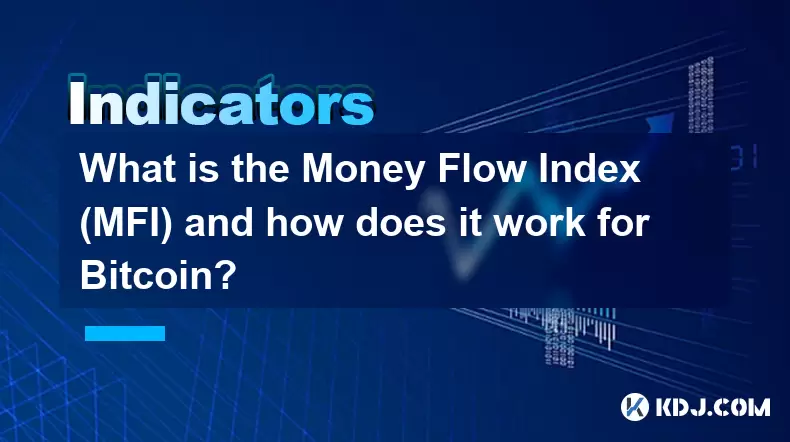
Understanding the Money Flow Index (MFI) in Cryptocurrency Trading
The Money Flow Index (MFI) is a technical indicator used to measure the flow of money into or out of an asset over a specified period. It combines price and volume data to assess whether a cryptocurrency like Bitcoin is overbought or oversold. Unlike traditional oscillators such as the RSI, which only consider price changes, the MFI incorporates trading volume, making it a more comprehensive tool for analyzing market sentiment.
In the context of Bitcoin, where volatility is high and trading volumes fluctuate rapidly, the MFI becomes particularly useful. Traders rely on this metric to gauge potential reversals or confirm ongoing trends by observing how capital moves in and out of the market.
How Is the MFI Calculated?
To understand how the MFI works for Bitcoin, it's essential to first grasp its calculation process. The MFI typically uses a 14-period setting, although this can be adjusted based on trader preference or strategy requirements.
- Typical Price: For each period, calculate the typical price using the formula: (High + Low + Close) / 3.
- Money Flow: Multiply the typical price by the volume for that period to get the money flow.
- Positive and Negative Money Flow: If the current typical price is higher than the previous one, it’s considered positive money flow; if lower, it’s negative.
- Money Ratio: Divide the sum of positive money flows over the selected period by the sum of negative money flows.
- MFI Value: Compute the final MFI value using the formula: MFI = 100 – [100 / (1 + Money Ratio)].
This calculation results in an oscillator that ranges from 0 to 100. Values above 80 suggest overbought conditions, while those below 20 indicate oversold territory.
Interpreting MFI Levels for Bitcoin
For Bitcoin traders, interpreting MFI levels can offer insights into potential trend exhaustion points. When the MFI rises above 80, it signals that buying pressure has been strong, possibly leading to a pullback. Conversely, when the MFI drops below 20, it indicates excessive selling activity, potentially signaling a bounce.
However, these levels should not be treated as direct buy or sell signals. In highly volatile markets like Bitcoin, prices can remain overbought or oversold for extended periods during strong trends. Therefore, combining MFI with other indicators like moving averages or support/resistance levels is often necessary for better accuracy.
Using MFI Divergences to Predict Market Reversals
One of the most powerful applications of the MFI is identifying divergences between price action and money flow. A divergence occurs when the price of Bitcoin makes a new high, but the MFI fails to reach a new peak — suggesting weakening momentum.
- Bearish Divergence: Price reaches a new high, but MFI forms a lower high, indicating reduced buying interest.
- Bullish Divergence: Price hits a new low, but MFI forms a higher low, signaling increasing buying pressure despite downward movement.
These divergences can serve as early warning signs of potential trend reversals, giving traders an opportunity to adjust their positions accordingly.
Applying MFI in Bitcoin Trading Strategies
Traders can integrate the MFI into various Bitcoin trading strategies depending on their risk tolerance and time horizon. Here are some practical ways:
- Swing Trading: Use MFI levels to identify potential entry and exit points during short-term swings within a broader trend.
- Day Trading: Apply shorter timeframes (e.g., 5-minute or 15-minute charts) with tighter MFI settings to capture quick intraday moves.
- Trend Confirmation: In uptrends, ensure MFI stays above 50; in downtrends, keep it below 50 to validate the strength of the prevailing direction.
- Combining with Volume: Watch for spikes in volume alongside extreme MFI readings to enhance confirmation of potential reversals.
It's crucial to backtest any MFI-based strategy before live deployment to ensure it aligns with historical Bitcoin behavior under similar market conditions.
Common Pitfalls and How to Avoid Them
Despite its usefulness, the MFI isn't foolproof. Misinterpretation can lead to poor decisions, especially in fast-moving crypto markets. Here are some common pitfalls and how to avoid them:
- Relying Solely on MFI: Always use the MFI in conjunction with other tools like trendlines, candlestick patterns, or MACD to filter false signals.
- Ignoring Trend Context: Extreme MFI values in a strong trend may not result in immediate reversals. Adjust expectations based on overall market structure.
- Poor Timeframe Selection: Using too short or too long a timeframe can distort readings. Experiment with different settings and timeframes to find what works best for your strategy.
- Failing to Account for Whales: Large-volume trades by institutional players or whales can skew MFI readings temporarily. Consider filtering whale activity if possible.
By understanding these limitations, traders can apply the MFI more effectively in Bitcoin trading scenarios.
Frequently Asked Questions
Q: Can the MFI be applied to altcoins as well?
A: Yes, the MFI is applicable to all cryptocurrencies, including altcoins. However, its effectiveness may vary depending on trading volume and market liquidity.
Q: What is the ideal MFI setting for Bitcoin day trading?
A: While the default setting is 14, many day traders prefer reducing it to 7 or 10 for faster signals. Adjustments should be tested on historical data before live application.
Q: Does the MFI work well in sideways markets?
A: The MFI performs best in ranging markets where overbought and oversold levels are more reliable. In trending environments, it may give misleading signals unless used with additional filters.
Q: How does MFI differ from RSI in Bitcoin analysis?
A: The key difference lies in volume consideration. The MFI includes volume in its calculation, offering a more nuanced view of market dynamics compared to RSI, which is purely price-based.
Disclaimer:info@kdj.com
The information provided is not trading advice. kdj.com does not assume any responsibility for any investments made based on the information provided in this article. Cryptocurrencies are highly volatile and it is highly recommended that you invest with caution after thorough research!
If you believe that the content used on this website infringes your copyright, please contact us immediately (info@kdj.com) and we will delete it promptly.
- Cryptos in July 2025: Massive Gains or Just Hype?
- 2025-07-05 20:30:13
- Pepe's EVM Layer 2 Meme Coin Mania: What's the Hype?
- 2025-07-05 20:50:12
- Shiba Inu, Dogecoin, and the Crypto Skyrocket: What's Making These Memes Soar?
- 2025-07-05 21:10:12
- Tokenized Stocks: Robinhood, Gemini, and the NYSE Threat
- 2025-07-05 21:10:12
- Altcoin Adventures: Navigating the Pepe Fork Frenzy and Solana's Summer Swings
- 2025-07-05 21:15:12
- Hong Kong's Tokenised Bond Leap: Zero Stamp Duty Sparks Web3 Ambitions
- 2025-07-05 20:30:13
Related knowledge

How to set up a moving average crossover alert for Dogecoin
Jul 05,2025 at 07:33pm
Understanding Moving Averages and Their Relevance to DogecoinMoving averages (MAs) are among the most commonly used technical indicators in cryptocurrency trading. They help smooth out price data over a specific time period, offering traders a clearer view of trends. Dogecoin, being a highly volatile altcoin, often exhibits strong momentum when certain ...
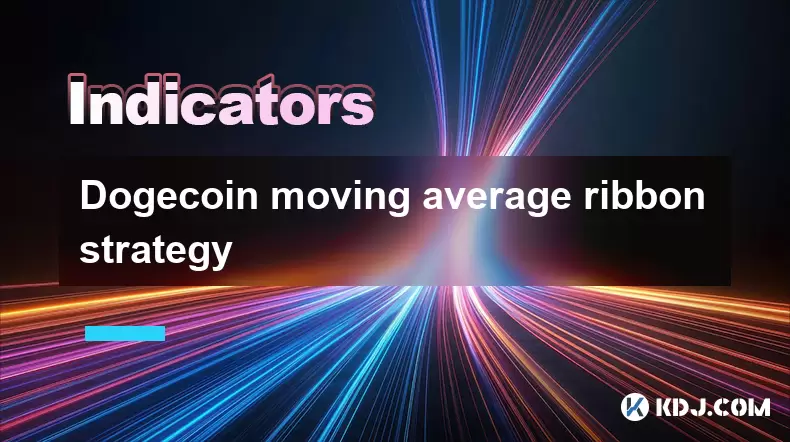
Dogecoin moving average ribbon strategy
Jul 05,2025 at 07:32pm
What is the Dogecoin Moving Average Ribbon Strategy?The Dogecoin moving average ribbon strategy is a technical analysis approach used by traders to identify potential trends and reversals in the price of DOGE. This method involves plotting multiple moving averages (MAs) on a price chart, typically of varying lengths, which visually form a 'ribbon' when ...
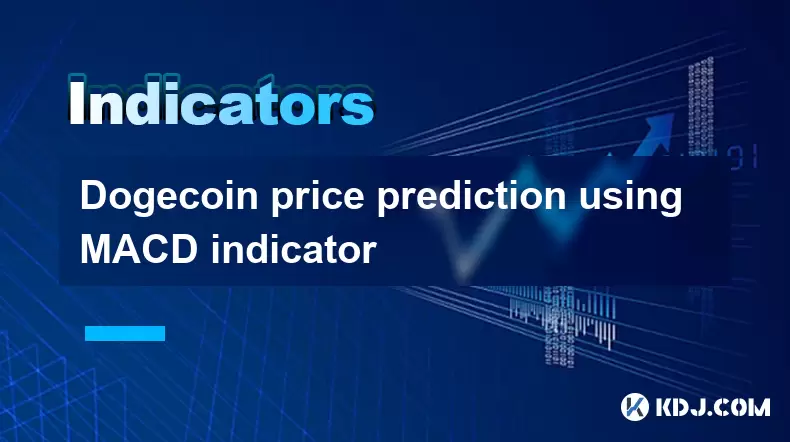
Dogecoin price prediction using MACD indicator
Jul 05,2025 at 07:18pm
Understanding the MACD Indicator in Cryptocurrency TradingThe Moving Average Convergence Divergence (MACD) is a popular technical analysis tool used by traders to identify potential price trends and reversals. It consists of three main components: the MACD line, the signal line, and the MACD histogram. The MACD line is calculated by subtracting the 26-p...
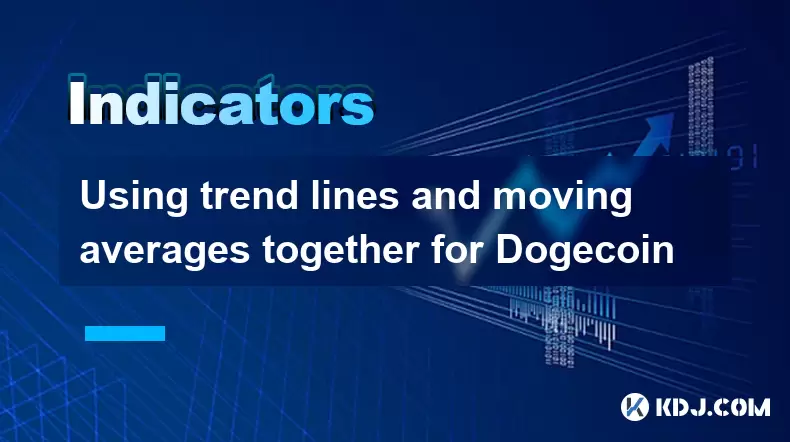
Using trend lines and moving averages together for Dogecoin
Jul 05,2025 at 07:16pm
Understanding Trend Lines in Cryptocurrency TradingTrend lines are essential tools for analyzing price movements in the cryptocurrency market. In Dogecoin trading, trend lines help identify potential support and resistance levels by connecting significant price points on a chart. When applied correctly, these lines can indicate whether the asset is in a...
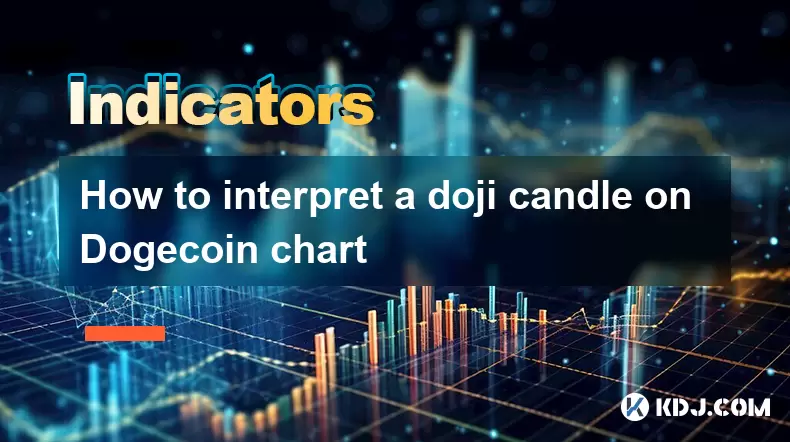
How to interpret a doji candle on Dogecoin chart
Jul 05,2025 at 07:49pm
Understanding the Doji Candlestick PatternA doji candle is a crucial technical indicator in cryptocurrency trading, especially when analyzing assets like Dogecoin. It represents market indecision and often signals potential reversals or continuation patterns. A doji forms when the opening and closing prices of an asset are nearly identical, resulting in...
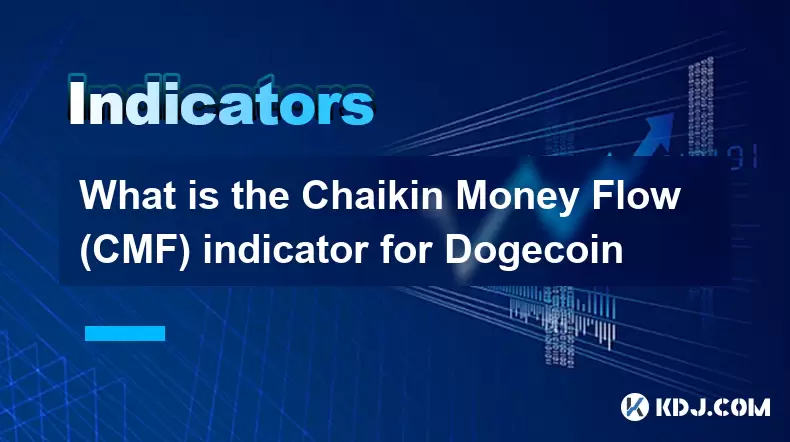
What is the Chaikin Money Flow (CMF) indicator for Dogecoin
Jul 05,2025 at 07:32pm
Understanding the Chaikin Money Flow (CMF) IndicatorThe Chaikin Money Flow (CMF) is a technical analysis indicator developed by Marc Chaikin to measure the accumulation and distribution of a financial asset over a specific period. It combines both price and volume data to assess whether institutional investors are actively buying or selling an asset. In...

How to set up a moving average crossover alert for Dogecoin
Jul 05,2025 at 07:33pm
Understanding Moving Averages and Their Relevance to DogecoinMoving averages (MAs) are among the most commonly used technical indicators in cryptocurrency trading. They help smooth out price data over a specific time period, offering traders a clearer view of trends. Dogecoin, being a highly volatile altcoin, often exhibits strong momentum when certain ...

Dogecoin moving average ribbon strategy
Jul 05,2025 at 07:32pm
What is the Dogecoin Moving Average Ribbon Strategy?The Dogecoin moving average ribbon strategy is a technical analysis approach used by traders to identify potential trends and reversals in the price of DOGE. This method involves plotting multiple moving averages (MAs) on a price chart, typically of varying lengths, which visually form a 'ribbon' when ...

Dogecoin price prediction using MACD indicator
Jul 05,2025 at 07:18pm
Understanding the MACD Indicator in Cryptocurrency TradingThe Moving Average Convergence Divergence (MACD) is a popular technical analysis tool used by traders to identify potential price trends and reversals. It consists of three main components: the MACD line, the signal line, and the MACD histogram. The MACD line is calculated by subtracting the 26-p...

Using trend lines and moving averages together for Dogecoin
Jul 05,2025 at 07:16pm
Understanding Trend Lines in Cryptocurrency TradingTrend lines are essential tools for analyzing price movements in the cryptocurrency market. In Dogecoin trading, trend lines help identify potential support and resistance levels by connecting significant price points on a chart. When applied correctly, these lines can indicate whether the asset is in a...

How to interpret a doji candle on Dogecoin chart
Jul 05,2025 at 07:49pm
Understanding the Doji Candlestick PatternA doji candle is a crucial technical indicator in cryptocurrency trading, especially when analyzing assets like Dogecoin. It represents market indecision and often signals potential reversals or continuation patterns. A doji forms when the opening and closing prices of an asset are nearly identical, resulting in...

What is the Chaikin Money Flow (CMF) indicator for Dogecoin
Jul 05,2025 at 07:32pm
Understanding the Chaikin Money Flow (CMF) IndicatorThe Chaikin Money Flow (CMF) is a technical analysis indicator developed by Marc Chaikin to measure the accumulation and distribution of a financial asset over a specific period. It combines both price and volume data to assess whether institutional investors are actively buying or selling an asset. In...
See all articles

























































































